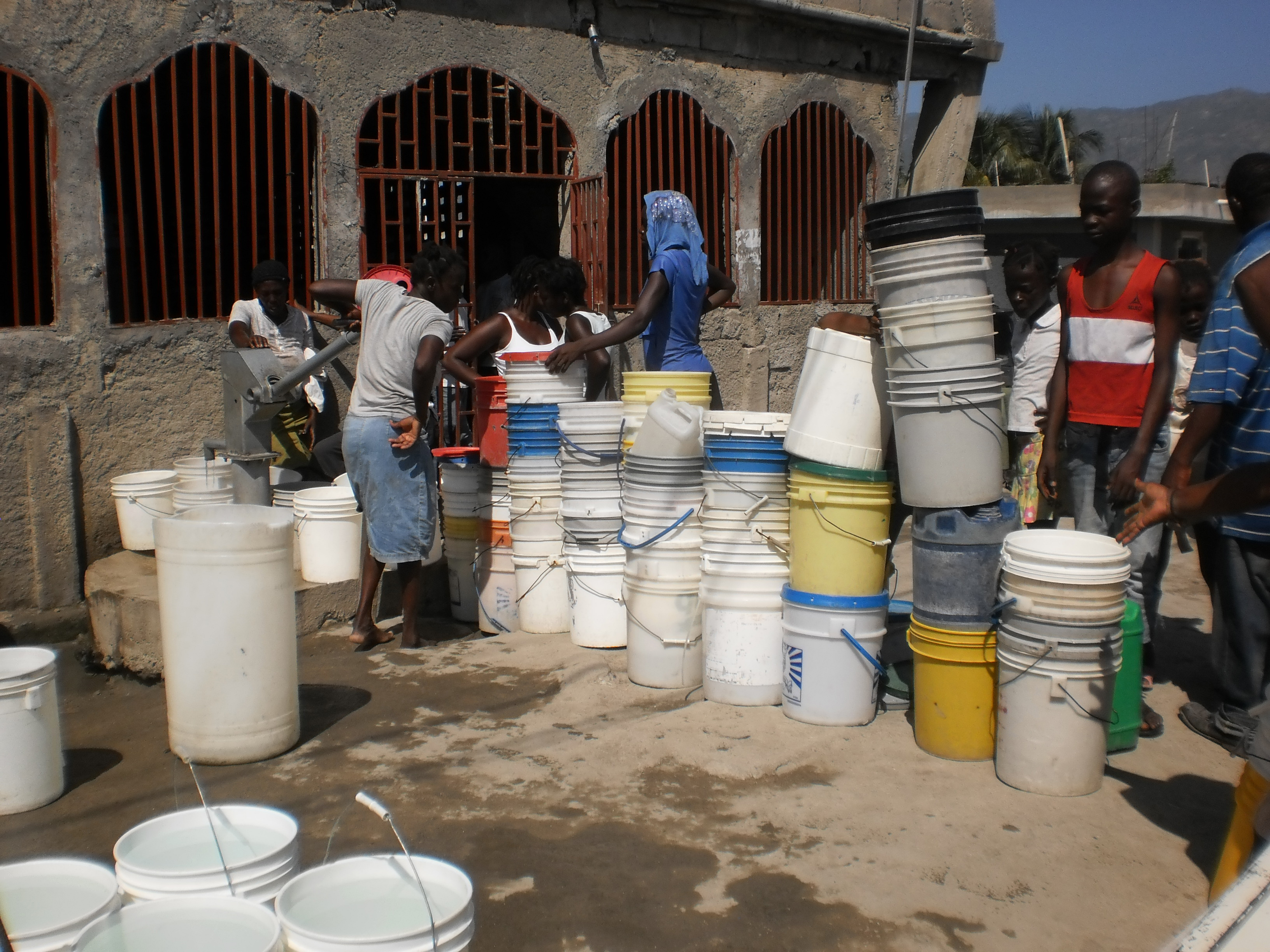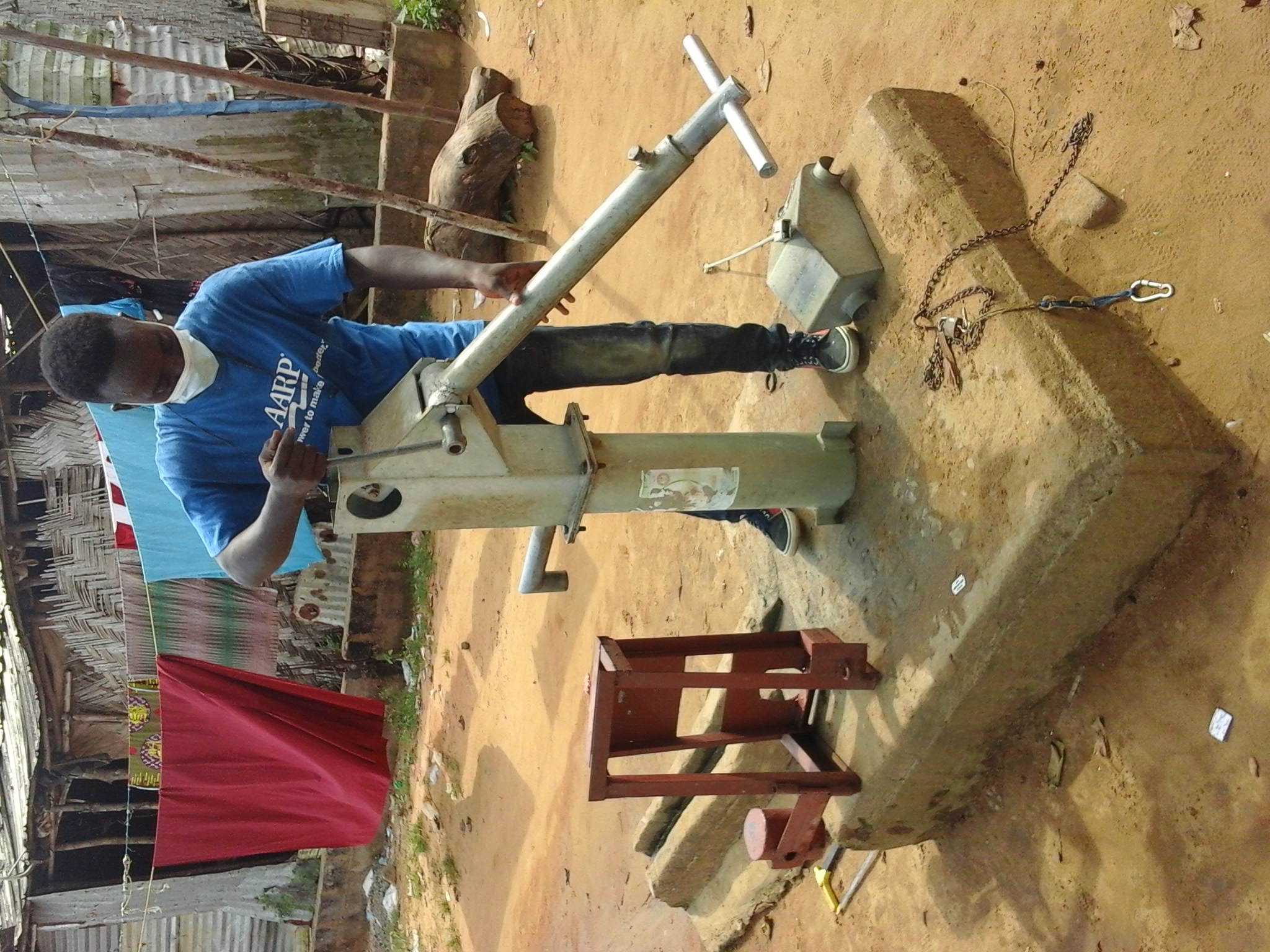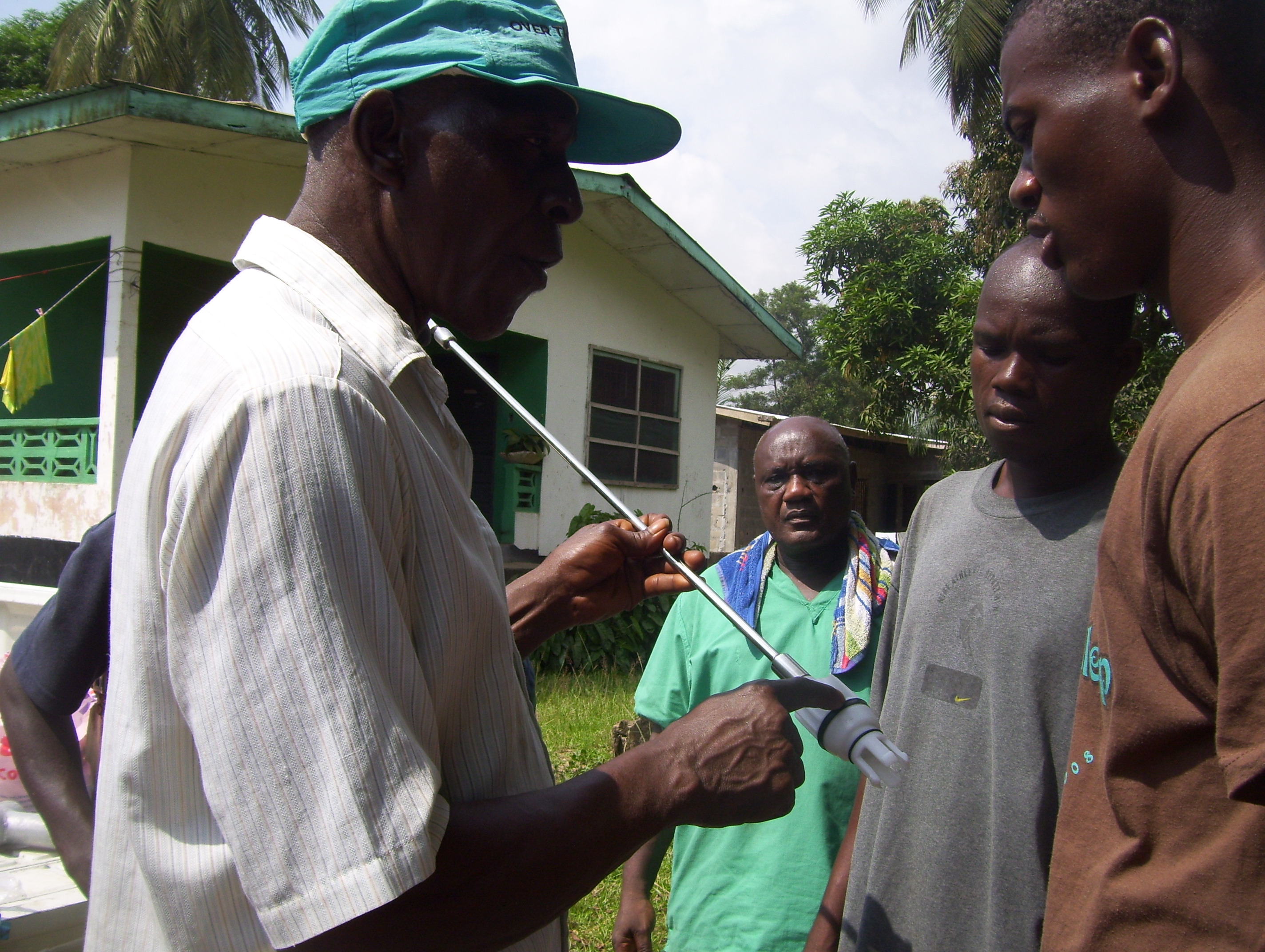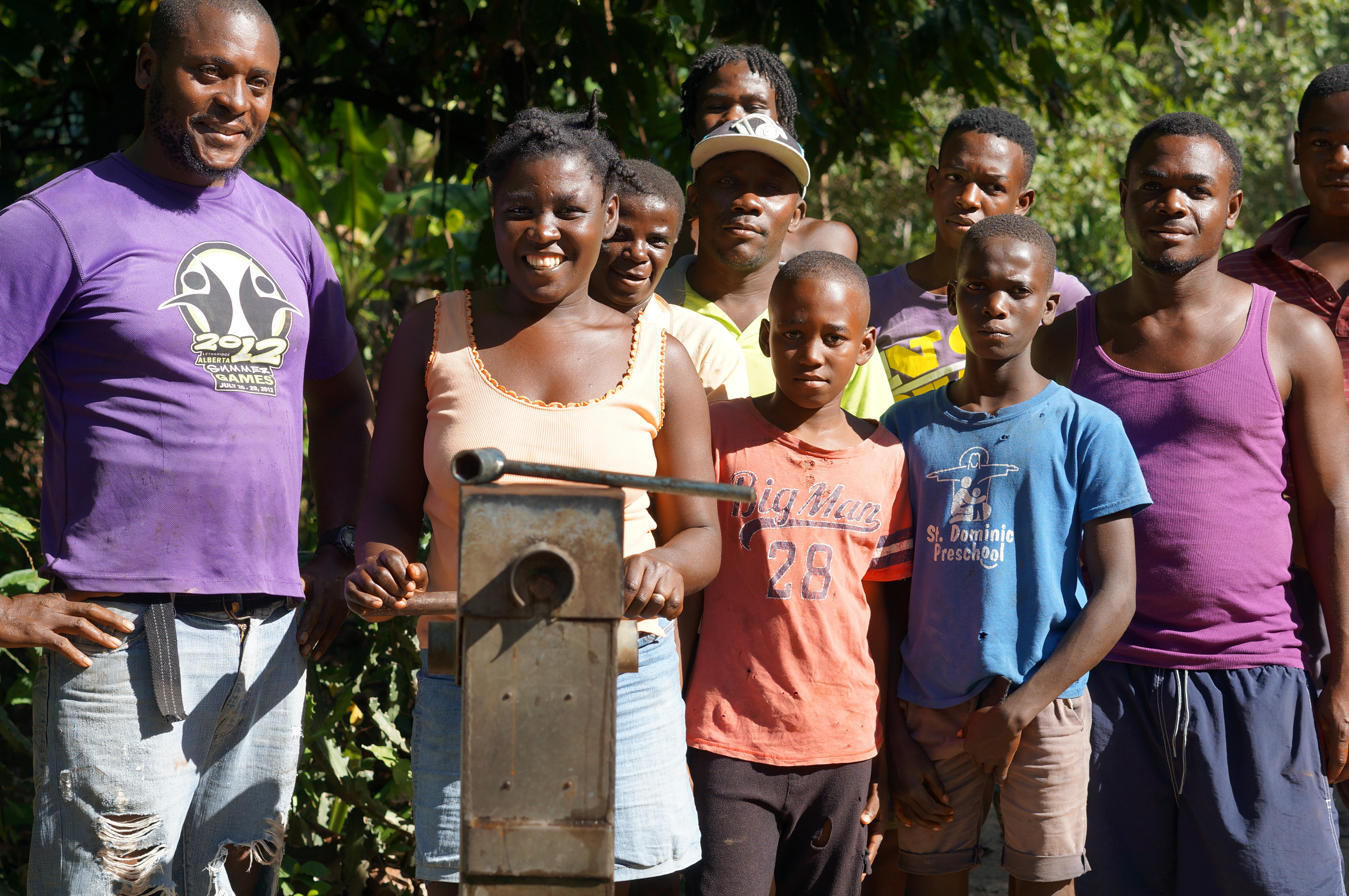⭠ back to development goals
DEVELOPMENT GOAL #4:
Plan for Long-Term Project Maintenance
Rationale: It doesn't make sense to be drilling new wells at the same rate that wells are breaking down and not being unused. But hand pumps failing and not being repaired continues to be one of the world's greatest development failures.
TARGET 1: Strive for more than one community water source
| 2 Points |
When villagers get a well providing safe water, it meets their immediate short-term needs. However, the pumps that bring the well water to the surface have parts that wear, and when a pump stops working, the community instantly looses its access to safe drinking water.
This is why it is important for every community, regardless of its size, to have access to more than one water source for when one source becomes unavailable. Ideally, it would be two or more drilled wells with handpumps, but it could even be a dug well with the water being boiled while the hand pump on the other well is being repaired.
Application Story: Cascading Pump Failure
In Liberia, there are four communities in Margibi Country — two on each side of the Marshall Highway. Each community used to have about 500 residents. Lifewater helped provide safe drinking water in this area by drilling one well in each of the four communities. All the wells were located within a two-kilometer radius of each other.

One community failing to fix its broken pump started a chain reaction that quickly led to the entire area losing its access to safe drinking water. Lifewater named this phenomenon "Cascading Pump Failure."
With no functioning pumps, all 2,000 residents of the four communities reverted to fetching drinking water from stagnant swamps. This continued for several months until a Lifewater team was finally alerted to the situation. All the pumps required simple repairs which were completed in a day for just $100!
Cascading pump failure will not occur if a community has a maintenance plan in place, takes immediate action to repair a broken pump, and has an alternate source of water to draw from while their primary pump is being repaired. The adjacent towns could have protected their supply by having a trained Well Caretaker, by locking the pump after their water had been drawn to guard against overuse, and by having their Well Caretaker help the first community fix its broken pump before others started failing.
TARGET 2: Help communities develop a clear maintenance plan
| 3 Points |
Before a project is started, a community should buy into the idea that they are responsible for maintaining the pump. They should have a maintenance plan in place so everyone knows exactly what to do when their pump breaks down to get it back in service as soon as possible.
Besides the "No Plan" option, there are three types of maintenance options:
- Insurance Model: Villagers pay a flat annual fee of about $20 USD. In exchange, whenever their pump has problems, they can call their local Lifewater team to repair it. To keep this program affordable, it needs to be sponsored by Lifewater donors, as the amount the village pays is only for fuel costs and does not cover the team's salary, vehicle repair, or pump parts. The cost of parts can range from $5 to $200 USD. This 'Insurance Model' has worked worked well in Africa, but not in Haiti – due to a heavy distrust the Haitian people have of handing over money, as a result of past corruption.
- Mechanic Model: Villagers either fix the pump themselves when it breaks down, or call their local Lifewater team to repair the pump. We have learned that the cost of this model must be significantly higher than the 'Insurance Model', or villages choose to not pay the annual fee until there is a problem (kind of like calling your agent to sign up for insurance right after you have been in a car accident). This model can also fail from a lack of trust in cash payments, or from well-meaning, untrained villagers dropping parts or tools into the well as they attempt to repair it themselves.
- Guided Repair Model: In this model, no money changes hands. Lifewater workers are called to help after a pump breaks down. They guide local repair technicians through the process and provide needed parts. After doing this a few times in person, the hope is that the advice can be given over the phone – with village technicians' exchanging new parts for old ones that they bring to the local Lifewater team's office.
Application Story: The Superhero
Lifewater started training community Pump Repair Technicians in Liberia in 1995, but without repetitive experience and available parts, these technicians often defaulted to calling their local Lifewater office to send a repair crew, rather than trying to do the work themselves.
In 2005, some Lifewater volunteers, dressed in their Sunday best, were walking down the Bensenville Highway to a church service. They were flagged down by some women who said their pump had broken down the day before and they needed to get water for their families. After pumping the handle, the volunteers quickly realized the problem was not serious and could be solved without additional parts.

When the pump was put back together, the local women pumped the handle and fresh cool water poured out. They were overjoyed – hugging and cheering David on like he was the town superhero! David had an ear-to-ear grin.
No one even heard or responded to the Lifewater volunteers as they said farewell and headed off to church – leaving the superhero chatting with the excited women as they filled their buckets. And the seed for the idea of "guided pump repair" was planted.
TARGET 3: Trained project technician (1 Point) and well caretaker (1 point)
| 2 Points |
Most Lifewater Canada wells are completed using Afridev handpumps. Afridev is short for "AFRIcan DEVelopment". Since they are public domain pumps made in a number of countries, the supply chain is much more reliable than that of a private company. Afridev handpumps are designed for Village Level Operation and Maintenance (VLOM). This is done by reducing the number of tools needed for a repair, to a specialty foot valve puller, two open box wrenches, and a lug wrench.

Pump Repair Technician
Lifewater has been training Pump Repair Technicians in every village where we drill a well since 1997. The results have been mixed... with a few technicians stealing the tools, others moving away, and some not feeling confident or experienced enough to attempt a repair.
More work needs to be done to make Pump Repair Technicians more effective. But the benefits are obvious: shorter well 'down' times, less work and expense for the local Lifewater teams and therefore, an even more efficient use of Lifewater donors' support.
Application Story: The Trained Bandits
After the Liberian civil war, an aid group received substantial international funding to train demobilized ex-combatants. The decision was made to train them as Pump Repair Technicians. For weeks, they were trained on how to use tools, how wells work, and how to take apart and repair every known Afridev hand pump problem. The funder and aid group were happy to successfully complete a major development initiative. The former fighters were happy to be transitioned into a new career. Everyone was happy — until the last day of school when they were handed diplomas and learned there were no jobs. The surrounding villages already had their own Pump Repair Technicians and didn't need more.
Pump thefts began occurring the following week. Villagers across the region woke up to find their pumps had been stolen. Pumps also began showing up for sale in the local market — minus their ID number tags. Even the police approached Lifewater for a new pump after the one at the police station was stolen!
Eventually, Lifewater and other aid groups developed a metal security jacket which locks to the pump to cover all the bolts needed to take it apart. Thefts have dropped dramatically and we all learned about the potential long-term consequences of short-term plans.
In the meantime, Pump Repair Technicians are needed more than ever to help address the global problem of wells sitting broken-down. But training must happen in the context of the local community – not in diploma-issuing schools, but in village settings where there is a mutually agreed-upon need for a technician and a plan to hire them.
Ongoing support and training, such as that gained through the 'Guided Repair Model' (see the 'Superhero' story above), will ensure technicians gain the experience they need to keep safe water flowing in their communities.
Well Caretaker

One of the key jobs of the caretaker is to monitor the pump while it is in use. By ensuring that the handle is operated with "full" strokes, the pump cylinder will last much longer than when there are rapid, short strokes – as these cause wear to only a short section of the cylinder.
The Well Caretaker ensures people are not bathing, watering animals, doing dishes, or washing laundry at the pump. They also watch that children are not touching and contaminating the spout while washing their hands after toileting. The caretaker makes sure that "social etiquette" is practiced at the well. This may include preventing young girls from being forced from their place in line, littering, toileting in the vicinity of the pump, or drawing excessive amounts of water.
Finally, the caretaker is the most likely person to notice if the pump is not performing as it should. They can alert the local Pump Repair Technician, or call their local Lifewater team, to ensure the pump is repaired before it stops working altogether.
Application Story: Chaos at Ma Sarah's School
There was a school in Paynesville, Liberia in need of a water well. One of our conditions for providing a well at the school was that it would also provide safe water for surrounding residents. This agreement sounded fair, and everyone was happy to have water. The well was successfully drilled, and the school janitor, Ma Sarah, was trained as the Well Caretaker.
Within a short time, unexpected problems began. Food wrappers were littered all over the school yard, and some people were even using a corner of the playground as a toilet! Ma Sarah was spending more and more time monitoring people as well as the pump.
As word of the good-quality water spread, crowds of women with buckets continued to grow. At its best, the school yard became a place for loud laughter and animated social gatherings. At its worst, the yard was a place for intense arguments, threats and altercations. Teachers had trouble teaching because of the loud noise outside their classroom windows, and at recess, the children's playground was increasingly spoiled.
It became impossible for Ma Sarah to take care of her janitorial duties, monitor the pump, and control the people. She finally exercised her Well Caretaker authority and took action. The pump was locked from 9:00 a.m. to 4:00 p.m. with the exception of short openings for students during recess. Community members could draw water before and after school, but if the yard was unacceptably soiled, there would no community access to water.
Teachers could now teach. Students had cool water at recess. Ma Sarah could peacefully clean the school. And neighbourhood women began to police each other's activities rather than be without access to the water their families needed. This was as close as you can get to a "happily ever after" ending – all thanks to Ma Sarah, the local Well Caretaker!

